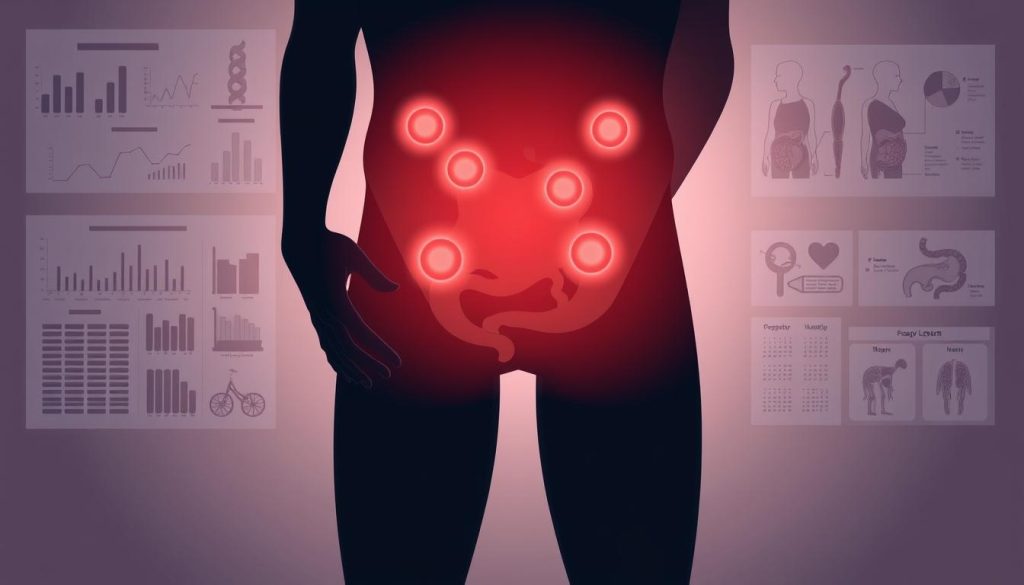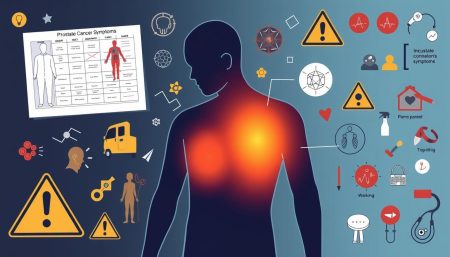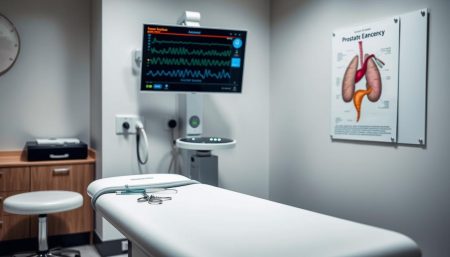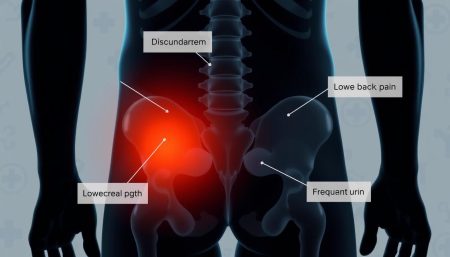Prostate cancer is a silent threat to men’s health. It often starts without any noticeable symptoms. Knowing the early signs is key to getting help early and improving outcomes. As men get older, it’s more important to understand these subtle changes.
Many people wonder what prostate cancer feels like. Early-stage prostate cancer might not cause obvious pain. But, as it grows, certain signs can appear. These signs of prostate cancer include changes in urination, pelvic discomfort, or pain in the lower back or hips.
Knowing about prostate cancer symptoms helps men take charge of their health. Regular check-ups and talking openly with doctors are crucial for early detection. By staying alert and informed, people can act quickly to protect their health and address concerns.
Understanding Prostate Cancer: A Comprehensive Overview
Prostate cancer is a big worry for men all over the world. This overview looks at the prostate gland’s role, risk factors, and how it affects men’s health.
The Role of the Prostate Gland
The prostate is a small gland in the male body. It makes fluid that helps and protects sperm. As men get older, the prostate can get cancer.
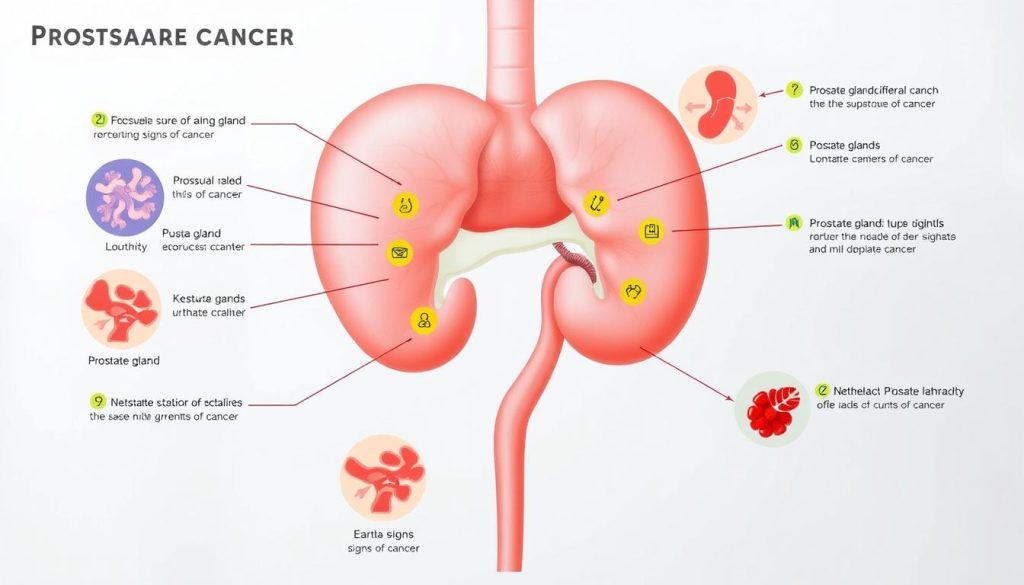
Risk Factors and Demographics
Many things can make a man more likely to get prostate cancer:
- Age: Risk goes up after 50
- Family history: If your family has it, you might too
- Ethnicity: African American men are at higher risk
- Diet: Eating too much fat might raise your risk
The prostate-specific antigen (PSA) test is very important. It checks PSA levels in the blood. High levels might mean there’s a problem.
Impact on Men’s Health
Prostate cancer can really change a man’s life. It can cause trouble with urinating, sex, and pain. Finding and treating it early is key to a better outcome.
| Stage | 5-Year Survival Rate | Common Treatments |
|---|---|---|
| Localized | Nearly 100% | Surgery, Radiation |
| Regional | Nearly 100% | Surgery, Radiation, Hormone Therapy |
| Distant | About 30% | Hormone Therapy, Chemotherapy |
Knowing about prostate cancer helps men take care of their health. Regular check-ups and talking to doctors are key. They help find problems early and manage them well.
What Does Prostate Cancer Feel Like: Common Physical Sensations
Prostate cancer often starts without symptoms. Men might not feel anything in the early stages. But as it grows, they may feel different kinds of pain or discomfort.
In the early stages, men might notice changes in how they pee. They might pee more often, especially at night. Or they might have trouble starting or stopping their pee flow. Some might feel a burning sensation or like they didn’t empty their bladder fully.
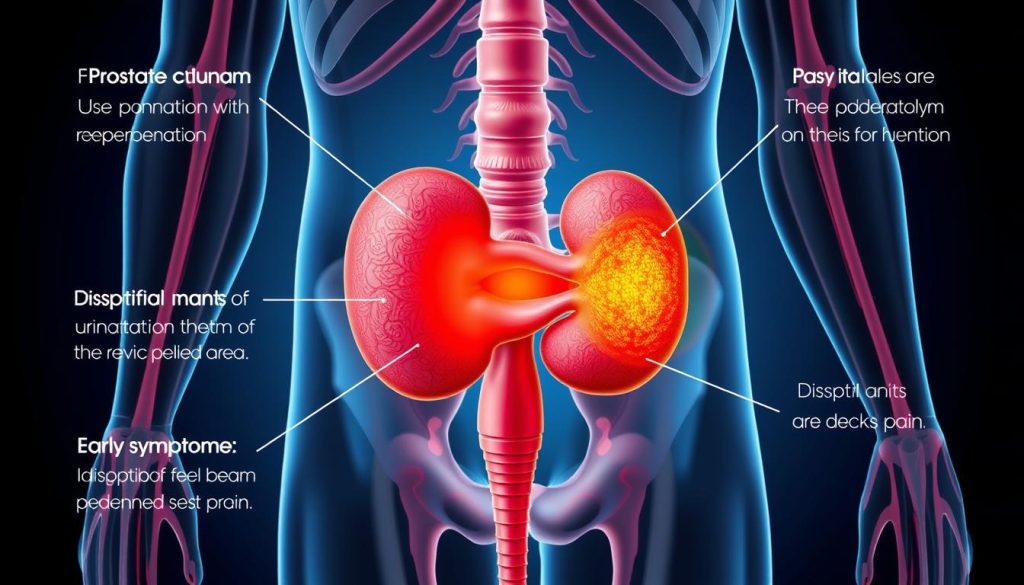
As prostate cancer gets worse, symptoms get more serious. Men might feel pain in their lower back, hips, or pelvis. This could mean the cancer has spread to other parts of the body.
Changes in sex life can also be a sign. Men might find it hard to get or keep an erection. Or they might notice less semen when they ejaculate.
| Prostate Cancer Stage | Common Physical Sensations |
|---|---|
| Early Stage | Urinary changes, mild discomfort |
| Advanced Stage | Bone pain, sexual dysfunction, persistent pelvic discomfort |
It’s important to remember that symptoms can be different for everyone. Some men might have many symptoms, while others might not have any. Regular check-ups and screenings are key to catching prostate cancer early and treating it effectively.
Early Warning Signs and Symptoms of Prostate Cancer
Spotting prostate cancer early can greatly improve treatment outcomes. Men should watch for any unusual signs and see a doctor if they notice changes. Regular prostate cancer screening is key for catching it early.
Urinary Changes and Difficulties
Urination issues are common early signs of prostate cancer. Look out for:
- Frequent urges to urinate, especially at night
- Weak or interrupted urine flow
- Difficulty starting or stopping urination
- Blood in urine or semen
Sexual Function Changes
Prostate cancer can also impact sexual health. Signs include:
- Difficulty achieving or maintaining an erection
- Decreased libido
- Pain during ejaculation
Pelvic Discomfort
Pelvic discomfort may signal prostate problems:
- Pressure or pain in the pelvic region
- Discomfort when sitting
Bone Pain and Other Physical Symptoms
In later stages, prostate cancer can spread, causing:
- Bone pain, particularly in the hips, spine, or ribs
- Unexplained weight loss
- Fatigue
Keep in mind, these symptoms don’t always mean cancer. But if you notice any, talk to your doctor. They can help with evaluation and screening.
| Symptom Category | Common Signs | Action Required |
|---|---|---|
| Urinary Issues | Frequent urination, weak flow | Consult urologist |
| Sexual Changes | Erectile dysfunction, pain | Discuss with doctor |
| Pelvic Discomfort | Pressure, pain when sitting | Seek medical evaluation |
| Other Symptoms | Bone pain, weight loss | Immediate medical attention |
Diagnostic Methods for Prostate Cancer Detection
Screening for prostate cancer is key to catching it early. The prostate-specific antigen (PSA) test is a major tool. It checks PSA levels in the blood, which can hint at cancer if they’re high. Men over 50 should get regular PSA tests, or earlier if they’re at higher risk.
Digital rectal exams also help in finding prostate cancer. A doctor feels the prostate gland for any odd sizes or textures. These exams, along with PSA tests, can lead to more tests if needed.
If tests show something’s off, imaging like MRI or ultrasound might follow. These give clear pictures of the prostate. Doctors can spot any odd areas. Sometimes, a biopsy is needed to confirm cancer. This involves taking small tissue samples for lab checks.
It’s important to know the good and bad of prostate cancer screening. Early detection and treatment are benefits, but there’s a chance of overdiagnosis or too many tests. Talking to a healthcare provider about the risks and benefits is crucial for making the right choices.
FAQ
Q: What are the most common early signs of prostate cancer?
A: Early signs of prostate cancer include frequent urination, especially at night. You might also have trouble starting or stopping urination. Weak or interrupted urine flow and blood in urine or semen are other signs.
But, many men with early prostate cancer don’t show symptoms. That’s why regular screenings are key.
Q: At what age should men start getting screened for prostate cancer?
A: Men should talk to their doctor about prostate cancer screening at 50 if they’re at average risk. African American men and those with a family history of prostate cancer should talk about it earlier, around 45. Your specific situation might be different, so it’s best to discuss with your doctor.
Q: What does prostate cancer pain feel like?
A: Prostate cancer itself often doesn’t cause pain, especially in its early stages. But, as it progresses, some men might feel discomfort in the pelvic area, lower back, or hips.
In advanced stages, prostate cancer that has spread to the bones can cause pain. This pain might feel like a dull ache or sharp pain. Remember, pain can be caused by many conditions, so it doesn’t always mean you have prostate cancer.
Q: How is prostate cancer diagnosed?
A: Prostate cancer is diagnosed through a combination of tests. These include a digital rectal exam (DRE), a prostate-specific antigen (PSA) blood test, and imaging tests like MRI or CT scans. A prostate biopsy is also used to examine small samples of prostate tissue under a microscope.
The PSA test is often used as an initial screening tool. But, elevated PSA levels don’t always mean cancer. A biopsy is usually needed for a definitive diagnosis.
Q: Can prostate cancer be cured?
A: Yes, prostate cancer can often be cured, especially when detected early. Treatment success rates are high for localized prostate cancer. Various treatments are available, including surgery, radiation therapy, and active surveillance.
The choice of treatment depends on the cancer stage, overall health, and personal preferences. Even in advanced stages, many treatments can manage the disease and improve quality of life, even if a cure isn’t possible.
Q: Are there any lifestyle changes that can reduce the risk of prostate cancer?
A: While some risk factors can’t be changed, certain lifestyle changes may help reduce risk. Maintaining a healthy weight, exercising regularly, and eating a balanced diet rich in fruits and vegetables are important.
Limiting red meat and high-fat dairy products and not smoking are also beneficial. Some studies suggest that foods high in lycopene (like tomatoes) and selenium might have protective effects. However, more research is needed to confirm these benefits.












